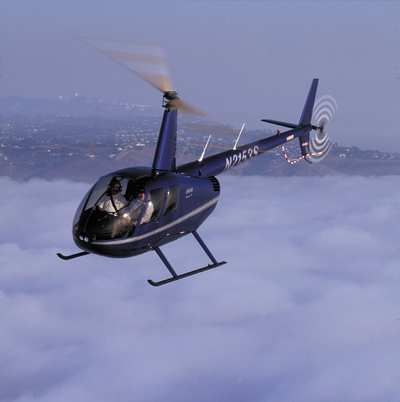Wed, Dec 18, 2013
Helicopter's Tail Rotor Was Struck By A Fueling Mat Left On The Aircraft
The NTSB has issued a probable cause report from an accident involving a Robinson R44 II helicopter that caused substantial damage to the aircraft. The pilot survived the accident, which occurred on February 6 this year.

According to the NTSB's factual report released in September, the pilot of the helicopter executed an autorotation landing after a fueling mat struck the tail rotor at the Tulsa International Airport (KTUL), Tulsa, Oklahoma. The commercial pilot was not injured. The tail rotor blades received substantial damage. The aircraft was registered to and operated by Crumpton Aviation LLC under the provisions of 14 Code of Federal Regulations Part 91 as a business flight. Night visual meteorological conditions prevailed for the flight and no flight plan was filed. The flight was originating at the time of the accident and was destined for Richard Lloyd Jones Jr. Airport (KRVS), Tulsa, Oklahoma.
After fuel servicing by fixed base operator personnel, the pilot lifted off from the ramp area and began a turn to the southwest. Climbing through 150 feet above ground level, the pilot reported a loud bang followed by loss of tail rotor effectiveness. The pilot executed an autorotation landing on a concrete ramp at the airport.
During examination of the accident site, two fractured tail rotor blades and a damaged fueling mat were found on a path between the initial liftoff point of the helicopter and its landing location. Examination of the tail rotor blades indicated that damage was consistent with contact by the fueling mat.
The board said in the probable cause report that after fuel servicing, the line technician did not remove the rubber fueling mat from the fuselage. The pilot did not observe the mat on the fuselage before taking off, most likely due to his inadequate preflight inspection of the helicopter. While climbing through 150 feet above ground level, the fueling mat departed the fuselage and impacted the tail rotor, which resulted in the fracture of both tail rotor blades and a loss of tail rotor control. The pilot executed an autorotation landing and landed without further incident.
The National Transportation Safety Board determines the probable cause(s) of this accident to be the line technician’s failure to remove the refueling mat from the helicopter fuselage following servicing, which resulted in the mat striking the tail rotor in flight, and the pilot’s inadequate preflight inspection.
(R44 image from file. Not accident aircraft)
More News
From 2023 (YouTube Edition): An Even Faster Rolling Extra! Jim Campbell joined General Manager of Extra Aircraft Duncan Koerbel at AirVenture 2023 to talk about what’s up and>[...]
“Receiving our Permit to Fly and starting Phase 4 marks a defining moment for Vertical Aerospace. Our team has spent months verifying every core system under close regulatory>[...]
Middle Marker A marker beacon that defines a point along the glideslope of an ILS normally located at or near the point of decision height (ILS Category I). It is keyed to transmit>[...]
The Experienced Pilot Chose To Operate In Instrument Meteorological Conditions Without An Instrument Flight Rules Clearance Analysis: The airplane was operated on a personal cross->[...]
Also: ATI Strike Prep, Spirit Still Troubled, New CubCrafters Dealership, A-29 Super Tucano Samaritan’s Purse is officially moving its historic Douglas DC-8 cargo jet into re>[...]
 Classic Aero-TV: Extra Aircraft Announces the Extra 330SX
Classic Aero-TV: Extra Aircraft Announces the Extra 330SX Aero-News: Quote of the Day (11.15.25)
Aero-News: Quote of the Day (11.15.25) ANN's Daily Aero-Term (11.15.25): Middle Marker
ANN's Daily Aero-Term (11.15.25): Middle Marker NTSB Final Report: Lancair 320
NTSB Final Report: Lancair 320 Airborne 11.14.25: Last DC-8 Retires, Boeing Recovery, Teeny Trig TXP
Airborne 11.14.25: Last DC-8 Retires, Boeing Recovery, Teeny Trig TXP



